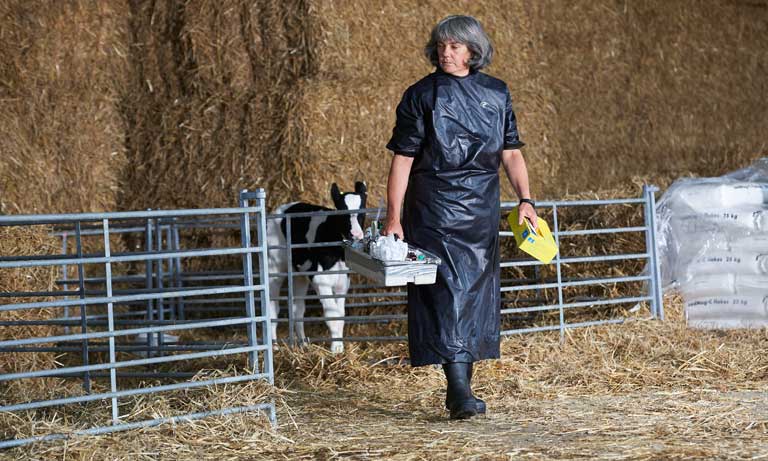Surplus male production animals
What's the issue?
The specialisation of breeds for desirable food production traits, such as high yield milk, meat and egg production, has created a problem of unwanted offspring in some farmed species. Many of these animals are killed at a young age, often shortly after birth.
This issue affects large numbers of male dairy cows (bobby calves), which do not have the desired genetic traits for economic meat production and so are often not considered suitable for typical beef rearing. It also affects large numbers of male chicks of layer strains, which have no commercial value since they do not lay eggs and their slow growth makes them unsuitable for economic meat production. A small number of other farmed species are also affected, including male dairy goat kids.
It can be contentious to kill healthy young animals, raising ethical issues surrounding the denial of potentially positive experiences that could have been available to the young animal. This is not a welfare harm per se providing it is carried out humanely but may pose risks to animal welfare depending on the method of killing and the treatment of the animal before it is killed.
Without a specific intended use of the carcass, the routine killing of healthy animals constitutes wastage, which is not in line with the principle of sustainable animal agriculture.

What's our view?
For an animal agriculture system to be regarded as sustainable, it should be undertaken in a way that is environmentally, ethically and economically acceptable for consumers, producers and wider society. As part of this, animal health and welfare should not be unnecessarily compromised to address human need.
The priority should be the five welfare needs, the principle of a life worth living and a humane death. Quality of life should always take precedence over lifespan.
However, the dairy and egg industries should aim to move away from the production of surplus animals and, where possible, adopt a ‘3 Rs’ approach:
Reduce
Minimise the number of surplus males being produced. This may be through selecting for sex or maximising the length of the lactation period. Further research should be carried out into practical methods for reducing the number of unwanted male offspring produced, and the uptake of current methods encouraged where appropriate.
Replace
Avoid the need to kill them by finding suitable markets. This includes raising male offspring for meat. The markets for high-welfare UK veal and goat meat should be promoted, to increase demand and reduce the need for on farm slaughter of surplus male animals. However, animals should only be reared for meat if the production system allows for a good life and humane death.
Refine
Improve slaughter methods to minimise suffering and improve welfare. Killing must always be undertaken in ways which are humane to reduce animal welfare harms, regardless of economic pressures. Further research should be carried out into practical refinement of on-farm killing methods so that surplus animals are killed as humanely as possible.
There is also a role for non-human consumption of male offspring, such as in animal feed. We recommend that when animals are killed, the dairy and egg industries should make sure the carcass is used to reduce wastage and improve sustainability.
We also think the public should have access to reliable factual information on production methods which require routine killing of unwanted healthy animals, so that the range of harms can be widely understood. This could also generate public interest in potential solutions and increase demand for higher welfare animal products, helping to create more stable markets and reducing the need for farmers to kill young animals. Farm assurance schemes could be instrumental in improving public understanding of the issues raised in this position, as well as wider health and welfare concerns.
Surplus male production animals policy
Surplus male production animals policy - executive summary
Get involved
- Contact our policy team for more information.
